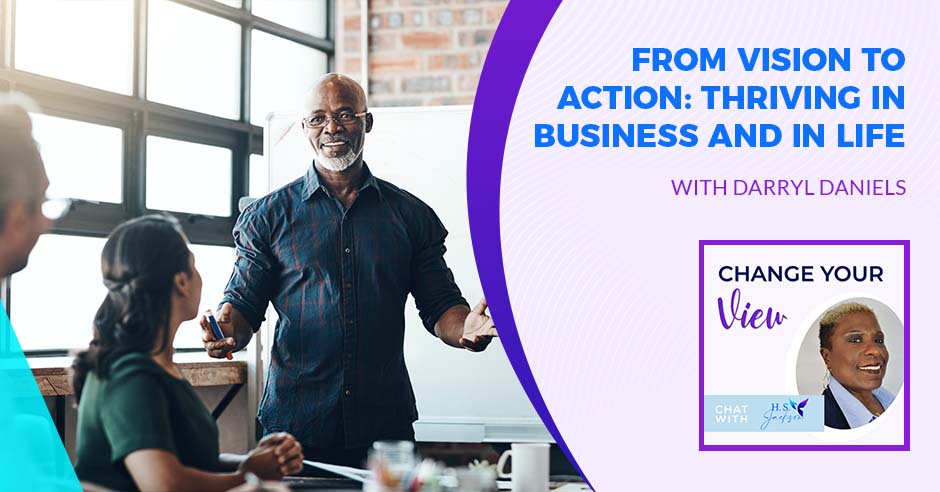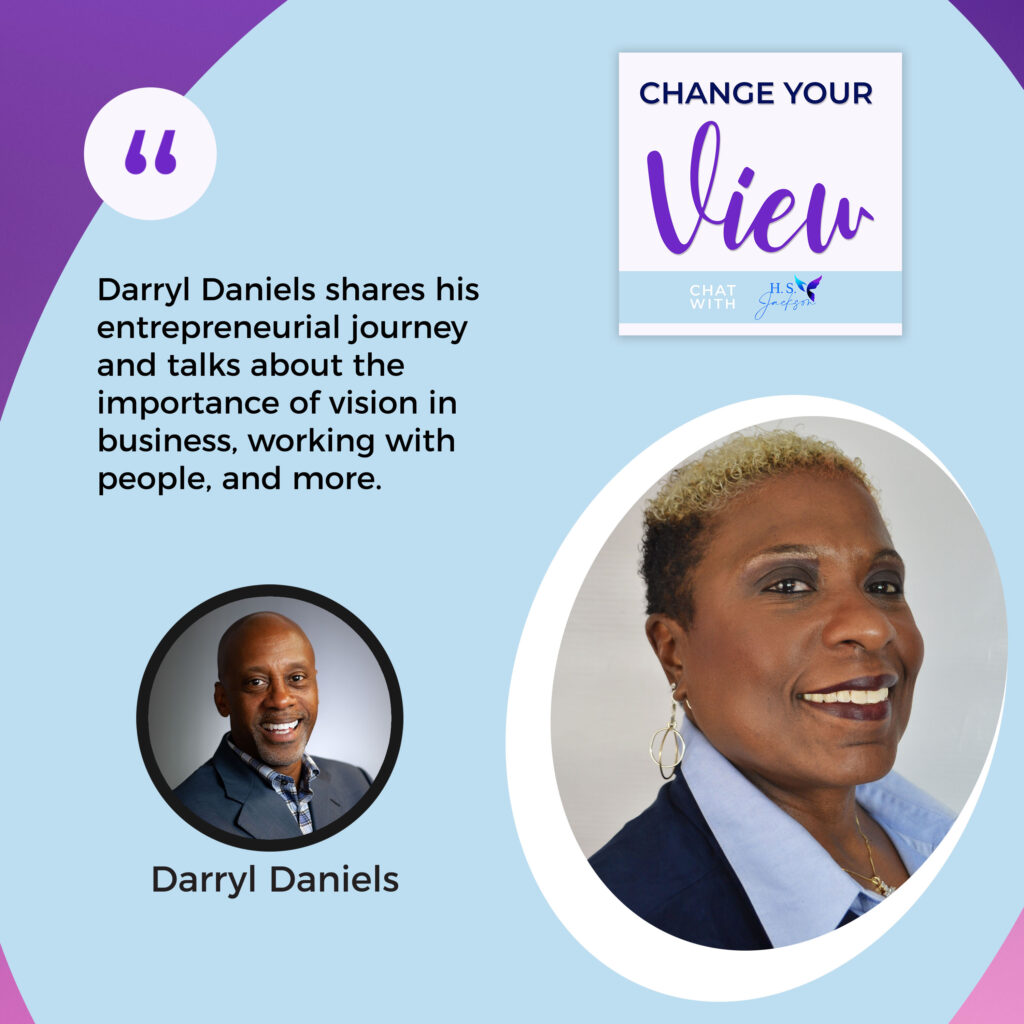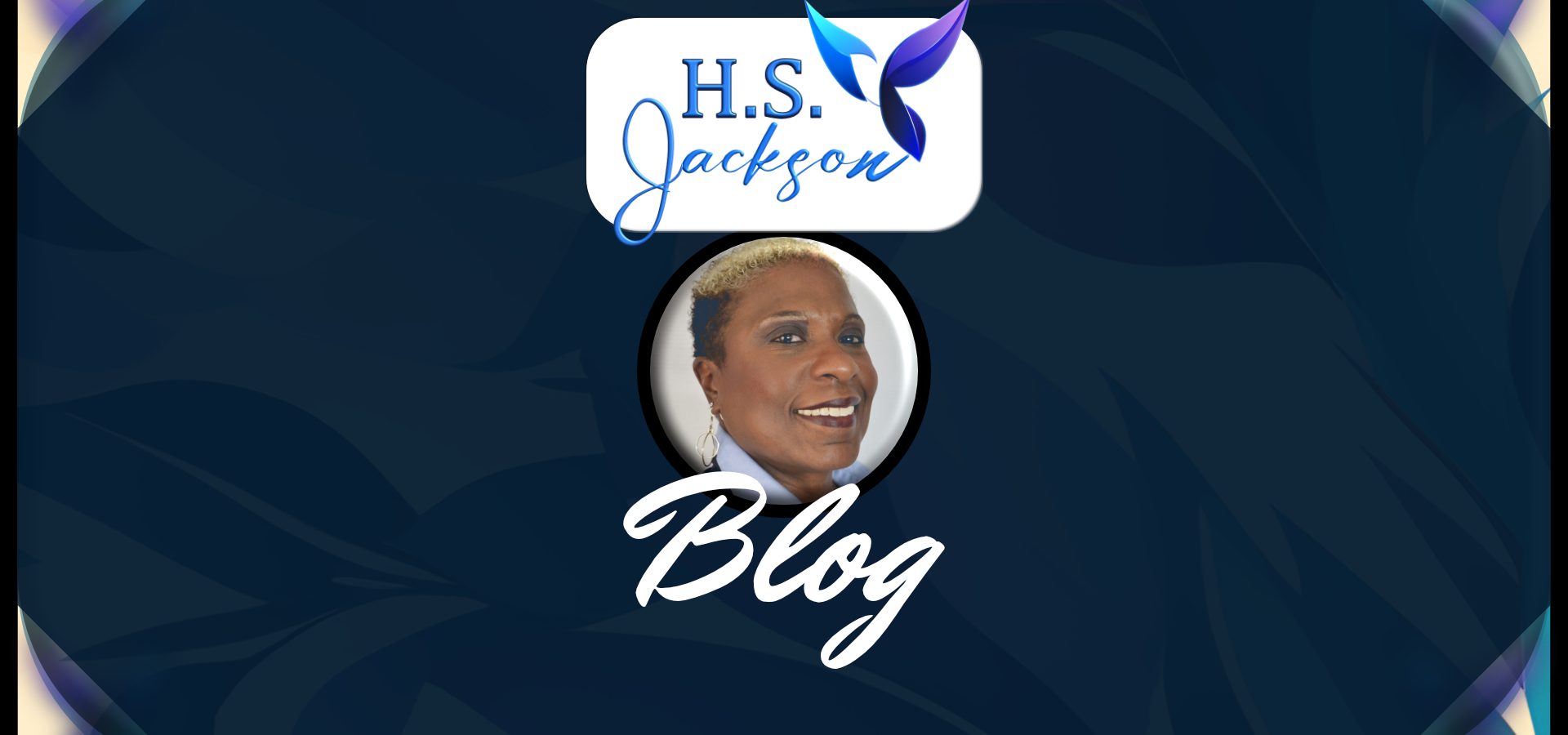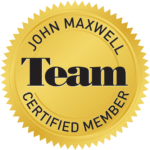
Success looks different for everybody, and depending what path you choose to take on in life, so too would the means to achieve it. In business, vision is key. It’s the blueprint that informs the direction of all your efforts, all that grind you put in every single day. However, to achieve that vision, the business owner must put necessary people, systems, and processes in place. Twenty years ago, Darryl Daniels traveled this path the hard way, and he’s accumulated countless valuable lessons along the way. Join the conversation and prepare to change your view as he shares his wisdom!
—
Watch the episode here
Listen to the podcast here
From Vision To Action: Thriving In Business And In Life With Darryl Daniels
I’m excited to have someone here with me. It’s ironic that Darryl and I have known each other for many years, but I don’t look like I’m as old as Darryl. You would never think I was that old, but that’s beside the point. We reconnected, and he has such a powerful story because, a lot of times, we get stuck thinking of one way. I commend Darryl because he took a different path many years ago, while I took the path that was easy for me. Now I’ve circumvented and I’m back to where Darryl was many years ago and where he is nowadays. Let me bring you on. Darryl, tell us about your business.
The firm is Jacobsen|Daniels Associates. We’re based in Michigan. You and I were connected many years ago through our conference work with the Airport Minority Advisory Council or AMAC. I admired your leadership. I was new to the organization. You were already there and you were such a forceful leader. It was exciting meeting you and others in the industry. I was new to the industry. I was able to watch and admire you and many others take such a leadership role and learn a whole lot about airports and how airport businesses operate, the consulting side of the house, the operational side of the house, and all of that. I am glad we were able to reconnect and pick up again. I can’t remember if I reached out to you or if you reached out to me.
The whole point is that I’m glad that we did and that we reconnected. Darryl worked with me as a consultant when I was a consultant, but then he upped and decided, “I’m leaving,” because he had this vision. The whole part that I love about him is that he had a vision to be an entrepreneur. You were working in the airport when I met you in New Orleans.
I was working for a smaller consulting firm, I’d say more like a regional firm where you’re working for a national firm. I was working for a smaller regional firm.
Thank you for that correction. We were both in aviation. Darryl decided that, “I’m going to launch my own business. I want to start with that,” because he had a vision. I want you to explain to me what that vision was for you at the time, and what was the epiphany that made you say, “It is time. I’m going to do this.”

When we were working together with AMAC and I could see other small businesses in the industry. I had always had a dream of running my own business from childhood. My degree is in Architecture. I was going to be an architect. I was going to do all this stuff with architecture. It was a matter of how to put all that together to do my own thing. I was dreaming of that for years.
It wasn’t until I got involved in aviation and airports that I could see a path. Meaning, I could see others in small businesses doing things and creating an opportunity for themselves and others. As they say, “You have to see it to believe that you can be it.” I saw it in other small businesses in the airport space. The thing that clicked for me was when I learned there was a business at the airport removing rubber from the runway.
Sometimes, you have to see it to believe that you can be it. Share on X“There’s a company that just does that. They just remove the rubber from the runway?” I start seeing other companies doing other little things in the airport. They were doing this and that. They were doing something for the airlines. They were doing something for the rental cars. I was like, “There’s this whole ecosystem out here where you can create a business and stay within the airport industry, stay within the airport space,” and that was exciting to me. As I got more involved with AMAC, I met more folks from all over the country, from various cities and airports, doing the same thing. Quite honestly, if they can do it, I can do it.
There are two things that you said that I would like to highlight. 1) You said, “I can.” Not if, and that’s what’s important because you had no doubt. You realized that you could tap into your potential and move forward. The other thing that you mentioned is the fact that networking. I use the word networking as casting your net and making it work for you.
I see that’s what you did. You used your connections to help build and create your business. I want to ask you because I know it’s not as easy as that. You cast your net and you met your friends, and I shouldn’t say they were friends, but they were associates, people that you can probably do business with. How long did it take you to earn that credibility to get that first client who believed in you, and what could you do?
It did not take long. I want to go back to what you said about, “I can.” That is important. Quite frankly, I didn’t realize how important it was until you said it. There was never any doubt. Some of that was based upon my upbringing, my parents and family members, brothers and so forth, people who had successfully done things and knowing like, “I can do this. I can put the pieces together to make this work.” It wasn’t, “I think I can. Maybe I can.” It was, “I can do this.” It was me saying, “If this fails and I don’t believe it will, I can go do other things.” It wasn’t like everything was in this one basket and I was done.
I’m like, “I can do this, but I can also do that.” That was important then in terms of the network, which is critical. Having a reliable source of individuals who know what you can do, believe in you, and identify with the cause and your mission takes time to develop. There’s no doubt about that. It takes time and a lot of energy around relationships and developing those relationships, even when you don’t need anything. I always say, “The best time to develop a friend is when you don’t need a friend.” You’re developing a business associate or a business relationship.
I always felt it was important for me to give to them first. That giving to them could be simple, “Let me introduce you to Billy, who can help you in your business. I know this, I know that.” It was always about me giving first before I asked of them. Quite frankly, it took a while for me to ask. Just to write out, ask, I would dance around it at times. You do have to be prepared to answer the question because a lot of times they ask you, “What can I do for you?”
Top Motivators
You have to be able to be prepared to have a response. You can’t hem and haw. There’s one thing that you said that also stood out to me and you hinted at it, which I want to move forward to, is your motivators. What were the top motivators for you? You said that you saw other people and you saw what they were doing, like the rubber, but that wasn’t your motivator. What were your motivators that showed you that you could be an entrepreneur, and how did they keep you moving forward? I know you had to face some challenges, which we’ll get to next, but what were your motivators?
I wanted some sense of independence around the work and to do the work that I wanted to do, but I was more interested in advancing opportunities for others. I wanted a firm and I was able to convince my partner of this, where we were advancing opportunities for minorities and women in aviation and for the people who are allies to those folks. I saw in our industry a lack of minorities and women working in airports, airport contracting, and aviation.
I felt that was something that I could do on a national scale and be impactful for people in their lives. That was important to me. That motivated me more than anything because I’m sure I could have continued on in a consulting firm or become a CEO at an airport or some other position within government, but I wanted to create a space where people were free to be themselves and free to explore their passions with within our firm, but create a firm where folks had real opportunity.
That’s what I think is the key to success to me. Not once did you say anything about the financial return that you sought. It was about serving others. Once you know what you’re trying to do is not for selfish gain, the rest will follow, which I want you to talk about. Let’s move forward. You started out. It was a two-man show, you and Brad. Maybe one day we’ll have a reunion. Brad is his partner. We all were connected. You start off with two. When did you start picking on more employees? How long did it take you to have that uptick?
We were laughing about this how we were in his basement or my basement when we were getting ready to start the firm. I said, “My vision in five years is for us to be ten employees and make X amount of dollars, X amount of clients,” all of the fantasy that you do when you’re doing a business plan and all that. We had no contracts. We had nothing. We’re going through the same process now. I was telling my staff, “It was a fantasy then. Now we have 200 employees. We have contracts all over the country. We work for everybody. It’s no longer a fantasy.”
When we go through this strategy process, we are now doing it based on some real stuff that matters. It was that opportunity that allowed me to understand, “I am a visionary. I’m someone who can connect the dots and see things. Brad is the person who executes. He takes that vision and then he executes. It was the perfect partnership of someone who can dream and then someone who can make stuff happen. I can make something happen.”
I love what you said because that’s what it takes to make the dream work, the vision. Both of you guys couldn’t have been visionaries because then you would’ve hypothesized to death.
We’d be dreaming all the time.
You would’ve been, “We could do this pie this way, or we could take this piece over here,” and you would never have gotten anything done. Pat Lencioni talks about this in the Working Genius, is that you have to have people within your team that complement each other. You and Brad had that. You were the visionary.
However, he was the executor because he was able to implement, and you always have to have an implementer because that’s the key. If they’re both in the same realm, then it will stagnate and would have phased out. I’m sure as you’ve moved on, you continue to add people to your team to complement in the different areas because you can’t have all the same thinkers. You have to have people who have different working geniuses.
You have to recognize that in your personalities, disciplines and all of that because that’s where all that gets mentored and nurtured. It was the perfect partnership in that sense.
Tell me, because you mentioned that you were in your basement and you had the dream of ten employees. Did it happen in five years? When did you reach the 10 employees and what did it take to get to the 10 employees?
It’s amazing how it did happen. It happened, quite frankly, even before the five years. The first 5 to 10 years was a bit of a grind. I will say it because you are creating something out of nothing. I remember even answering the phone and saying, “Jacobsen|Daniels.” “What is that?” People are like, “It is something totally new,” but you got to do it. You have to push through the fact that you are this entity now and want people to recognize the entity, not just the personalities. We spent a lot of time trying to create an entity that was branded around us. Soon, people thought we were much bigger than we were. They still do to some degree, but it was a slow grind. 3,5, 10 and 15 people.
It didn’t accelerate until we got to around 50, and then it started to jump to 75, 100 or 150. It started to grow the momentum. You have to appreciate the grind of creating it and all the systems that are needed to make it function. When you walk into a firm that’s already there, it feels like they have all that stuff already figured out. Here we were, figuring it out as we go, and that was tough. Buying furniture, buying paper, and all the stuff that you have to do, you have to do it all.
Another key point that you brought up because I love that, a lot of times, we can get stuck in working in the business until we don’t work on the business to make it grow. How did you have that balance? As you said, you answer the phone sometimes saying, “Jacobsen|Daniels.” You were buying the paper. You were in the weeds. How did you finally get out of the weeds and say, “I have to be the visionary if I want to continue growing this? If I stay here doing these things, I will not be able to make it grow?” How did you figure that out to move forward?
You have to be committed to adding talent and then getting other people in the right seats in the firm because otherwise, particularly in consulting, you’ll always be the one that the client calls to do the work. You have to do the work and then you’ve got to go back and work on the business. You have to do all of this stuff. Over time, you have to get the right talent to free you away from the daily organizational stuff on the ground. I’ll say one of the best hires was an administrative assistant, somebody to help keep things in order. You never appreciate that hire until you get it because when you get the right person there, you’ve got someone to assist you and help bring order to what is chaos. It is chaos.
Those first few years as you are trying to figure 401(k), this, the finances, P&L, balance sheet, and you’re learning all stuff with the documents and the contracts. I was the lawyer for the firm for the first few years because I couldn’t afford a lawyer. You go through all this stuff. Brad and I worked in the office every day, and we were on the phone together every night. Every night, we talk about this, “How do you do this?” It was all-consuming.
One thing I want to ask you about and you alluded to the fact that you didn’t have a lot of money. I think a lot of times we get stuck on the lack of resources and we don’t bring the personnel on because we want to wait until we get that big contract or we know that we have the money in our hand. What made you take that gamble? I’m sure you probably didn’t have the money every time you brought on someone. How did you put yourself forward to say, “I’m going to step out here because a lot of times we stop ourselves from stepping forward because of the lack?”
What we did was first secure the line of credit. You do that and at least in our case, we did it by first your own personal signature, but you only get so much money that way, and then you got to put up your house. You got to put up all this stuff. You’ve got to be prepared to do all of that because you do need the security of the line of credit to hire folks and to keep payroll going every week while those contracts are in place and while you start generating money from those contracts because, as you know, when you invoice, it could take you 90 days before you see $1. That is a balancing act, getting the contracts, getting the people.
I’ve got to tell you, the harder part about it is getting the people because no one believes you’re going to succeed that first year or year 2 or 3. It takes about five years before people start to think, “I think these guys are going to make it. I’m willing to join that. I’m willing to leave my safe security firm over here to come join that.” That takes a minute. Unless there’s someone who’s very close to you, it does take a minute for people to realize, “This is going to be successful. I’m willing to join them.”
It sounds like that was one of your challenges because I was going to ask what two of your biggest challenges were. It sounds like talent was one. You had that challenge with talent, so what was your workaround? What did you see as your way forward? If you had someone who says, “I have this six-figure job here, but you want me to come to work with you and take this gamble.” How did you cross that bridge? How did you help them to buy into your vision? That’s what a visionary leader is. They had to buy into your vision.
That’s where they like to say, “I got them to drink the Kool-Aid.” People need to hear you talk and believe you, but they need to see things. They need to see it in writing. They need clients or potential clients willing to talk to them to provide them with some security around, “This is going to happen.” For me, it was combining all those things, packaging all those things, and then selling them. You are selling it to those folks who want to join you in this effort.
It is a bit of a song and dance, but it is putting together and packaging all those things in a way that people will believe you and some people did not. I’ll admit, I think some people were afraid early on, I didn’t do a good enough job selling it to them, or they had their own security issues. It didn’t work all the time, but that’s okay. I think some have looked back and regretted that. Some have also looked back and joined us later. It wasn’t the right time for them then, but they came and joined us later. I have to tell you, quite a few have said, “I wish you guys had tapped me on those early days.” You never know.
Letting The Reins Go
There are a few that you didn’t tap that wish that you would’ve tapped to come to be part of the team. That’s amazing. You said a couple of things that I would like to expand upon because it sparked a thought in me. It goes back to the face of the company. When you were speaking about that, you have to learn how to let the reigns go because if you are the one that’s always out there, and I remember the hat when I was a consultant, too, and it struck a memory because I remember back at the time, my vice president always was the one who took the lead in meetings. When it was time for me to go into a meeting, they would go, “Where is Bill?”
I changed his name because we’re on it. They would be like, “Where is Bill? I know Bill, but you, I don’t know.” I was like, “I’m here. I was the one who crunched the numbers. I can tell you what’s in the numbers versus him coming in,” because you are tying the work in with someone who’s not doing the work when they should let the person who’s doing the work take the lead. That was disheartening to me. It can hurt your self-esteem and self-confidence to hear that. They don’t want to hear from you. They’d rather hear from the face that they know.
I think that’s something that people need to understand. That figurehead that you see is not the worker bee. It’s the other person who’s sitting in the meeting. You should allow them the opportunity to speak. What I would like for us to see as leaders is that we need to change our view and our perspective, “It’s not about me.” You mentioned it earlier, you are service. You first give a hand before you ask for a hand. Where did you learn that from? That’s key. You have to first give a hand before you ask for him. How did that get instilled in you?
You first give a hand before you ask for a hand. Share on XI had an uncle who was a mentor and we spent a great deal of time talking about how to be successful in business. He wasn’t even in business. He was a counselor at a university, but a lot of his stuff was transactional. He talked a lot about how you give, not with the expectation of something coming back to you, but with the expectation of helping someone else have a better situation, better life, a better way it is and feeling a lot of satisfaction in that.
When I translate that to business, I realize that people are more open to talking and listening to you if they feel that you have invested in them in some way. It’s such a simple thing to do. I’ll tell you this example. I was the chair of AMAC board for a few years. When we have a luncheon, a room full of 1,000 people, I would take it upon myself to go around the room, table to table. Sometimes, I would offer to get their drinks or food.
People are more open to talking and listening to you if they feel that you have invested in them some way. Share on XI’m like, “I might be chair of the board, but I want to be serving to you guys. This is a membership organization. I’m wanting you to see that I’m here to serve you, the money that you have done, you’ve invested in this organization.” I would go from table to table, talking to people and asking them, “Who would you like to meet? You’re at this conference. Who at this conference would you like me to introduce you to?” They would say, “So and so.”
I said, “Get up. I know he’s right over here. I’m going to take you right now to meet so and so.” That was exciting for me because I knew they came there or they should come with a business plan, a marketing plan, or some plan to network and meet people. That’s such an easy thing to do. Who can I introduce you that would help you in your business?
I love what you said because in networking, and it’s not to go out to meet people to see what you can get from them. I would say if you know you’re going to an event, at least find three people that you know you would like to meet. Don’t look for the people that you know. Instead, try to find someone that you don’t know, then don’t ask the question of, “What’s your name? What do you do?” Ask something that lets them know that you want to get to know them below the surface.
Getting Unstuck
“What was most interesting to you about your day-to-day? What was the challenge that you faced?” They’re going to perk up because they’re like, “This person wants to get to know who I am. They’re not asking me what my name is and what my business is.” Those things are equating to that person, and you’re making a connection to see what you want instead of seeing who they are. I love that because we have to understand that it’s not about me. It’s about them. You have to be selfless and not selfish because that is the key to success for me.
To me, success is not about amassing a fortune, but it’s about the souls that you touch and the lives that you change. I love what you said at the beginning of our talk. You started your business because you wanted to help people get into living in their passion, pursuing their gifts, and using those talents, creating an environment that was not available somewhere else.
I used to go to church. I wanted to be somewhere where I felt comfortable. You have to be in someplace where you felt comfortable, engaged, and involved and where folks can identify with you. It’s the same with the firm or business. You want to be someplace where you’re engaged, involved, and included in every aspect of the business. That’s what we wanted to create. I think we’ve done it successfully. It doesn’t work for everyone. Sometimes, you do have to make business decisions that are tough at times, but ultimately, you want to create that environment for your people.
Finding Balance
Let’s fast forward because I have two more questions I want to ask before we close out. I’m sure there might be some more, but one of the things I want to talk about because at the beginning of our talk, we talked about work-life balance and finding those boundaries for what I want to say is because when you initially started, the boundaries were you had to be all into this business and give 100% of your time.
I never talked if you were married or had kids or whatever, but I’m sure that in your personal life, there were some things where your spouse or if you were married to, had to say, “When are we going to have some time together?” They had to bear with you during that season because they had to buy into your vision and believe in you. How did you find that balance when you were in the trenches and then we’re going to move forward to where you are now?
There is no balance in the beginning. You are all in and it consumes you every day of the year and almost every minute because you are all in. It is how you survive. I think of it almost like an animal out in the woods. You’re out there trying to survive day to day. You’re trying to feed yourself, live and not be killed by some other animal. That’s how this is. That’s why it’s different. Owning a business is different than a job where you go to the job and then you go home and then you can go to the gym and do all that kind of stuff.
When you own a business and then when it’s you, there’s a little less risk. When you start getting other folks in, now you’re taking on the responsibility of all the folks in the firm and their lives. For them, it’s a job, but they got a job, a family and a house. You are part of securing all of that for them. I remember when one of the first employees was getting ready to buy a house, “Did you want to buy a house?”
You were like, “Don’t use this company as your security for your income.”
“You are putting more pressure on me. Now I got to go out here. I’ve got to keep doing this. I got to support my house and all this. I got to support your house.” That’s what it is. We’ve got to keep the money coming in all the time to support everybody. There’s no balance in the beginning. In my case, I was looking for an opportunity not to find balance but to find integration. That’s what worked for me, and that’s why I don’t say work-life balance anymore. I say work-life integration. How do you integrate these tools?
What does that look like? What is integration to you? I love that. I might have to steal that term because I do like that because I use boundaries, but I like the integration. Tell me what integration means.
What that looks like to me, particularly on a typical day, is that I am working from home. I may work for an hour or two doing something and then I’m going to go out in the garden for an hour or I may work longer days, but I am integrating everything I can into the day. If I am on a business trip, I’m going to integrate some kind of social or family activity as part of that business trip. If I’m on vacation, I have negotiated with my spouse that, “I’m on vacation, but if I need to work, I’m going to work. I’ll go play here, but I’m also going to work.” Let’s all agree that we can play and work at the same time because it wasn’t working, going on a vacation for a week and then worrying about the job or the business.
You are trying to say, “I’m going to turn my laptop off. I’m going to turn my phone off. I’m going to do all this stuff.” You are worrying the whole time. At least I was worrying the whole time like, “What’s happening? Did that contract come through?” I decided, “Stop all that.” Check-in. Sometimes, I would just read emails but don’t respond to see what’s going on.
I’ve figured out how to integrate all this stuff and not feel the pressure of not wanting to go on vacation or being uncomfortable on vacation because if I can read through some emails and not respond, then I know what’s going on. I know everything is fine. I know everything’s going to be fine anyway. It would go on without me, but my personality is that I always wanted to know what was happening.
There are two things that you said there I’d like to highlight. 1) You had a conversation and you reached a compromise with your spouse on, “Let’s agree that we’re on vacation, but give me some grace to know that I have to go check my emails to make sure everything is okay.” I would hope that spouse could compromise and say, “Do that, because if you don’t, I can see you’re going to sit here at this table at the pool and the whole time.”
I can appreciate that. Go and take that hour or maybe in the morning before we go out or whatever it is. Check in. Once we go on our excursion or whatever, you have to leave it behind. The other thing is, which is what I was mentioning, is that after you get that an hour or two hours max, whatever it is, then you get totally immersed in replenishing and refreshing your spirit so that you can then go back to do the work that you need to do to grow your business.
You find a way to immerse yourself and be present in whatever you’re doing then. You can do that because now you’ve freed yourself. You know what’s going on. I suppose there’s some risk of you might read an email and be like, “Ugh,” and then you got to deal with it. There are folks who can deal with stuff, and even if you had to say, “Go deal with this,” that’s somebody who can deal with it.
I prefer vacationing when the time zone is 8 to 12 hours difference because now you can deal with emails when they’re all sleeping, then you can at least read the emails and then you can be free to do what you need to do later. That time difference helps to know that they’re not working and you’re playing and or they’re working and you’re still playing or you’re sleeping, whatever it is.
You find ways to work the system. You’re in the Eastern time zone. You would go to the Central time zone would not work for you because you’re on the same time. Let’s say if you were to go to Australia or something like that on another side, it would be more beneficial because then you know that you could not get back immersed in work because other people are sleeping, and they’re not going to respond. You have to find ways to trick yourself into taking that break.
Let me ask you this, because when we first connected, you said this to me and I could get it because it’s not easy being an entrepreneur and starting out, but now you have a firm of 200 people, which I applaud you. You said, “If I had to do this all over again, I wouldn’t.” I looked. You laughed and I laughed, too. I said, “We have to talk about that more because we had to jump off the phone.” I want you to talk about that a little bit here. What do you mean by that? Think about what you have there.
I know the pressure and stress of owning your own business is not easy, but what you said at the beginning of our discussion was having the freedom and flexibility where you didn’t have to be held accountable to the higher-ups, but you are held accountable to the people that work for you. Don’t get me wrong. The thing is that you didn’t have to be tied to a phone because your boss called you to say, “I need you to work this weekend to do something.” You worried the boss. Explain to me what you meant when you said, “If I had to do this all over again, I wouldn’t.”
It’s quite simple. It is scary. You don’t know how frightening it is until you’re in it. You look from afar, as I told you, as I was going to AMAC and other conferences and would see other businesses, which seemed glamorous. There’s a glamorous feel to seeing executives walking in the con during the quarter, doing all this stuff, socializing, and having dinner. It seems like, “It’d be great to do all that.” You don’t see the drama, energy, and passion they have had to go through to be where they are.
When I say that, “Looking back if I knew, but I think it’s true of a lot of different things.” If you knew what it took to get through all of that, you’d be like, “I don’t want that. I don’t want to do that.” It’s like a roller coaster, but we do it. If I knew how that felt before, I never would’ve gotten on that rollercoaster, which I don’t know on a rollercoaster because I know. My word is that with the business, I did not fully understand what it meant when you signed your name on the front of the check.
All the responsibilities, all that it takes, and all-consuming it are to keep things, keep the machine fed and going. I don’t believe there’s any way I would have signed up for that because it was way too much work. I also told you it was the best decision I ever made. I realized that might seem contradictory. It was the best decision I ever made. It gave me a full life and the quality of life that I desired and dreamed. I didn’t know that you had to go through all of what you have to go through to get it here. It wasn’t like a family business that was handed to me. It was creating something out of nothing. That’s the tough part.
I go back to my whole premise. It’s to change your view, but it’s not to see with the physical eyes. It’s to see with the spirit. You started off with a vision and your vision was where you are probably, but to get to that, you have to continue seeing with that spirit, even though the physical things that become before you are those obstacles and those challenges. You have to keep your eye, and I say the invisible eye on the outcome that you desire to keep pressing ahead.
That’s what you did. That’s why you said it’s the best decision that you ever made because I see it as you were focusing on your vision. Your physical eyes were seeing all the things that you had to go through to get to where you wanted to be. The point is that you took the steps, were persistent, consistent and committed to getting to what you could see with your invisible eye.
That’s what I want people to understand. We have to be willing to go for what we cannot see with our physical eyes to instead believe in what can be with what we see within because if you stay stuck on your environment, and I’m sure you had naysayers who said, “I can’t believe you’re doing this. Are you out of your mind?”
You have to follow those motivators that you had. Those motivators were your driving force because you were helping others to become what they wanted to be because they had no other avenue at the time. What we have to be willing to do is break those barriers, remove those limiting beliefs, and go outside, our cultural barriers that we do have that try to keep us limited. if there’s one final thought you’d like to leave our years with, what would it be? What would you like to leave them with?
Don’t limit yourself. Look for opportunities to connect your network, resources and your passion to do the work you want to do to have the freedom, the life and the opportunities. You create opportunities for yourself. I share that with my team all the time, “Don’t look for me to give you work to do. Create the opportunity for you. Learn how to create it for yourself. It will be freeing and far more exciting for you when you do that.”
Instead of looking for a handout, go grab and seize what you want.
Create it for yourself.
Thank you for your time. This has been a wonderful conversation. It’s been enlightening and I pray that others will get the fruit and apply it to their life and move forward to do the things that they want to do in their life. Be limited. Thank you for this conversation.
You’re welcome.
I’m sure I will have you back on again.
Important Links
About Darryl Daniels
 Mr. Daniels is CEO and founding partner of Jacobsen Daniels (JD) an airport and aviation consulting firm based in Metro Detroit. JD consultants draw on technical expertise in planning, architecture, engineering, urban planning, environmental planning, finance, and operations to guide major airport development projects at many large international airports including LAX, Chicago O’Hare, Detroit Metro, JFK, Miami International, Atlanta Hartfield, and many more.
Mr. Daniels is CEO and founding partner of Jacobsen Daniels (JD) an airport and aviation consulting firm based in Metro Detroit. JD consultants draw on technical expertise in planning, architecture, engineering, urban planning, environmental planning, finance, and operations to guide major airport development projects at many large international airports including LAX, Chicago O’Hare, Detroit Metro, JFK, Miami International, Atlanta Hartfield, and many more.




